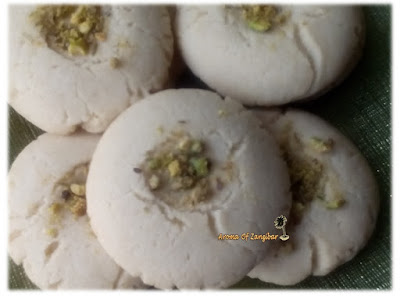Fatoush is a very colorful Levatine Bread Salad made from toasted or fried pita bread pieces with the garlicky and tangy salad dressing with touch of sumac , parsley and mint and is then tossed in a bed of beautiful green romaine lettuce and cucumbers , the bright red tomatoes and striking white and red radishes to form an attractive and unique salad.
As far as I know Fattush is widely prepared in Lebanon, and also in many other Mediterranean and Arab countries with minor variations. Fattush is usually served as part of "Mezzeh or Meze" an appetizer along with several other finger food dishes before the main meal, but it can also be served with the main meal if you wish.
Sumac powder is what makes this simple salad very unique and phenomenal , the sourness of the Sumac powder blended with the herbs is what attracted me to this salad at one time it almost became my staple diet.
Sumac is red , aromatic, lemony and velvety coarse powder that is derived from berries of a bush which grows wild in most Mediterranean regions and also in the Middle East. It plays a very important role in Arabic cooking as a preferred ingredient to lemon for sourness and astringency .
There are many other varieties of Sumacs ( about 35) that grow throughout the world in subtropical and temperate regions. However, they are NOT edible so be careful not to pluck any wild bushes that grows in your back yard, it will certainly give you a severe rush.
Besides the Fattush Salad, Sumac is used in varieties of dishes, as well as marinade for kababos and refreshing drinks and not forget the medicinal benefits to some extent.
This is a very tangy and juicy salad, however try no to over power the salad with alot of acidity it can be overwhelming .
The ingredients listed below are for 2 or 3 portion depending on how you serve it
1 heart of Romain Lettuce
2 Medium size Tomatoes ( cut into medium size cubes)
1 Medium size cucumber ( cut into medium size cubes)
3 Radishes ( Optional)
2 Green/Spring onions ( Optional)
1/2 or more pita bread chips ( fried or toasted)
Black Olives ( Optional)
For the dressing
1/2 tsp fresh garlic
1 tsp Sumac powder
1/4 tsp Paprika (optional)
2 tsp lemon/lime juice
1/4 cup red onions finely chopped
3/4 Tbl Olive oil
2 Tbl chopped parsley
1 tsp chopped mint
Salt& Pepper to taste
Method:













